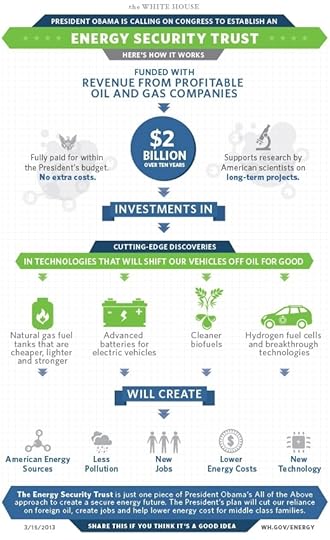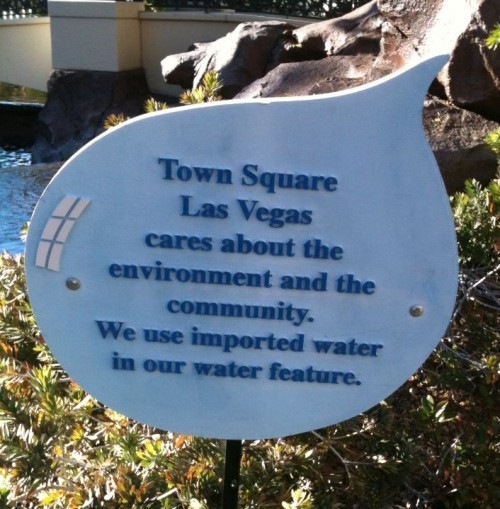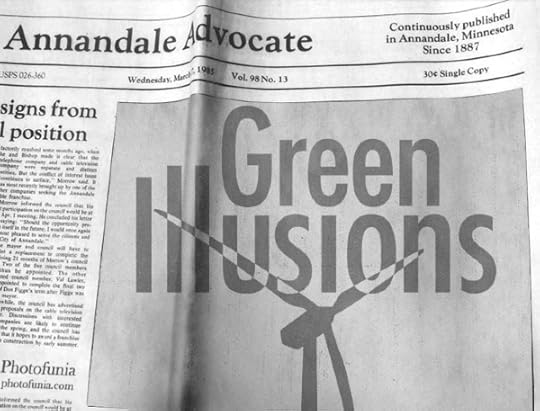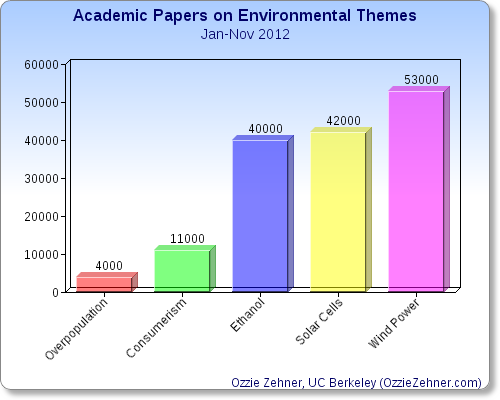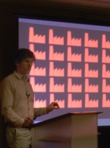Ozzie Zehner's Blog, page 2
March 15, 2013
Is Obama’s New Energy Security Trust Trustworthy?
President Obama’s Energy Security Trust, announced this morning, expands offshore oil drilling operations in order to provide a tax base for alternative energy, which will in turn lead to economic growth.
The irony in the president’s proposal is that it exposes how alternative technologies rely on economic arrangements that are themselves reliant on fossil fuels. And, if they work as advertised, these energy technologies will spur the kind of growth that will increase pressure to extract and burn fossil fuels well into the future.
Read more in this environmental justice book:


March 11, 2013
What You Don’t Know about Inequality
Inequality in American society is apparently not well understood by the general public. This motion infographic renders:
1) What people think a fair income distribution looks like
2) What people think income distribution really is
3) Actual income distribution in America
Wealth ultimately arises from natural resource extraction, primarily fossil fuels. So, this film offers a launching point to think about how the earth’s resources should be shared among its inhabitants. Also, how does income inequality affect rates and forms of consumption, investment, growth and other stresses on the non-human world?
See more about energy inequality in this environmental book:


March 7, 2013
Why Biochar Isn’t Green
UTNE Reader | Ozzie Zehner
While burning biochar, a rebranded term for charcoal, is less harmful than burning firewood, the fuel source would have a negative impact if produced on a large scale. ”Green Illusions,” by Ozzie Zehner, is a practical, environmentally informed and lucid book that persuasively argues for a change of perspective on dealing with climate change. When contemplating alternative energy sources, such as biochar, one must understand its advantages as well as its limitations. The following excerpt comes from chapter 3, “Biofuels and the Politics of Big Corn.”
Even as legislators flood cellulosic ethanol and other biofuel initiatives with funding, some biofuel opportunities go overlooked, mostly because they are boring in comparison. For instance, wastewater treatment facilities release methane, the main component of natural gas, but more than 90 percent of America’s six thousand wastewater treatment plants don’t capture it. As mentioned earlier, methane is a major greenhouse gas liability since its venom is more potent than that of carbon dioxide. The sludge output of the average American yields enough power to light a standard compact florescent light bulb without end. So skimming the methane from an entire city’s wastewater would not only prevent harmful emissions but also would produce enough power to run the entire wastewater operation, perhaps with energy to spare. Although not a large-scale solution, captured biogas is a reminder of the modest opportunities to draw upon biofuels without advanced technology.
Another biofuel product that is now starting to gain more attention is a convenient replacement for firewood. Burning firewood directly is a relatively dirty practice, emitting dangerous particulates, hydrocarbons, and dioxins. In poor countries, the soot from firewood, waste, and dung kills about 1.6 million people per year. It’s also a local climate changer; soot darkens air and darker air absorbs more solar radiation. But there’s another way to extract energy from wood besides burning it—one that was widely employed before the Industrial Revolution but has since fallen by the wayside—charcoal (recently rebranded as biochar). When processors heat wood above 300 [degrees celcius] with limited oxygen, in a process called pyrolysis, it spontaneously breaks into three useful fuels: biochar, heavy oil, and flammable gas. In addition to its use as a fuel, farmers can till their soil with biochar in order to reduce methane and nitrous oxide greenhouse-gas emissions. Archaeologists uncovered ancient South American settlements in which buried charcoal has been sequestered for thousands of years, lending interest to the concept of using biochar as long-term storage for excess carbon.
In all, there may be many benefits to implementing biochar techniques in place of burning wood and waste for fuel directly. But this doesn’t make biochar a global solution. Cornell researcher Kelli Roberts points out that large-scale biochar production, as envisioned by some eager biofuel productivists, could yield unintended consequences. As with other biofuel methods, if producers clear virgin land to grow biochar inputs such as trees and switch grass, the process could ultimately do more harm than good. Alternately, if producers grow biochar crops on existing farmland, farmers may be forced onto new land, yielding the same negative effects on virgin land plus the added risk of local food price instability. And then there is the hitch with any method for increasing available energy supply—it inevitability leads to growth, expansion, and increasing energy consumption—a reminder that smart upgrades in energy practices for local communities may not have the same positive effects if implemented on a larger scale.
Excerpted from Green Illusions: The Dirty Secrets of Clean Energy and the Future of Environmentalism by Ozzie Zehner, with permission of the University of Nebraska Press. © 2012 by Ozzie Zehner. Available wherever books are sold or from the Univ. of Nebraska Press (800) 848-6224.
Read on: Utne.com
An environmental book John Perkins is endorsing:


February 11, 2013
Las Vegas Mall Touts “Imported Water” in Pond
This photograph by Gwen Sharp, a professor of sociology at Nevada State College, shows how much this shopping center in Las Vegas cares about the water shortage at Lake Mead. It also renders how far our illusions have brought us. If we are capable of being fooled by this sign, then we can truly be hoodwinked by any green illusion.
Here’s what Dr. Sharp had to say:
It has several elements of classic greenwashing. The organization “cares about the environment and the community” — a vague, general claim that commits them to nothing specific. And their supposedly eco-friendly behavior is dubious and hard to evaluate…
The imported water comes from somewhere — an aquifer? another water shed? thousands of bottles of Perrier? — and it seems it would require energy to get it from there to here. The focus on not using a local water source sidesteps the larger question of whether it is environmentally responsible to build ponds and fountains (and grass-based lawns, for that matter) in the desert, regardless of where the water originates.
Send me your Green Illusion or discover other Green Illusions in:


December 12, 2012
Windy Assumptions

The Hill published my article on renewable energy subsidies. Please feel free to comment on The Hill article rather than on this site.
Windy Assumptions
Like the 28 governors and numerous environmental groups currently scrambling to extend wind power subsidies, I long assumed that wind turbines and solar cells offset fossil fuel use. They probably don’t. >> read the article
See why this environmental book is a Top-20 Nonfiction 2012:


December 4, 2012
Green Illusions a Top-20 Pick for 2012
This morning, Goodreads selected Green Illusions as a Top-20 Nonfiction pick for 2012, the first time a book from an academic press has made the annual list. Many thanks for your support!
Green Illusions is an environmental book that pioneers a critique of clean energy. But it doesn’t stop there. Green Illusions also delivers three dozen first steps around the themes of environmental justice, overpopulation, rebound effects, energy economics, degrowth, taxes, bicycling, livable neighborhoods, and energy conservation.
Though we generally believe we can solve environmental problems with more energy—more solar cells, wind turbines, and biofuels—alternative technologies come with their own side effects and limitations. How, for instance, do solar cells cause harm? Why can’t engineers solve wind power’s biggest obstacle? Why won’t contraception solve the problem of overpopulation, lying at the heart of our concerns about energy, and what will?
Anyone may receive a Free Chapter by sharing GreenIllusions.org on Facebook.


December 3, 2012
Why Do Academics Overlook Overpopulation?
I’ve recently been studying how much research funding and attention goes into topics such as overpopulation and consumerism in comparison to energy production technologies.
As I describe in Green Illusions, there are reasons to critique the presumption that alternative energy technologies will lessen environmental impacts of humans on the planet. Meanwhile, research on consumption and population issues pales in comparison. At least by the numbers.
On one of the largest academic social networks, Academia.edu, 2,934 academics list “renewable energy” as a research interest. Just 221 list “consumerism.” A scant 4 list “overpopulation” as a focus of their research. Acedemia.edu represents just a subset of the academy. However, these raw publication and interest metrics bring up some important questions.
Has academia rolled over to become an outlet for energy firms to plug into? To what degree is academic research relevant to the big-picture problems that humanity is facing? Please let me know what you think below:
Read about this 2012 Goodreads Top-20 Nonfiction book:


November 3, 2012
University Art Removed after Irking Energy Executives
The University of Wyoming removed a sculpture that links coal use to climate change and beetle infestations after it upset University donors, according to a New York Times article and Green Blog post.
The idea behind the sculpture that appeared on the University of Wyoming campus about 16 months ago was simple but provocative: a swirl of dead wood and lumps of coal, intended to show the link between global warming and the pine beetle infestation that has ravaged forests across the Rockies.
But in a place like Wyoming, where the oil, gas and mining industries are the soul of the economy, some view such symbolism as a declaration of war.
Read the full New York Times article.
See more about the environmental book John Perkins is endorsing:


September 15, 2012
Best Ad Ever? Introducing the all new, higher horsepower…bus
Even though most transit in the United States is slow and unreliable, Americans still overwhelmingly support public transit funding. I wonder how Americans would react to dedicated transit lanes, comfortable buses, and reliable schedules?
See more about the environmental book John Perkins is endorsing:


September 6, 2012
What do you know about slavery today?
We generally think of slavery as something of the past but slavery in its many forms persists today, perhaps in your own community. This is the topic of a new film, Not My Life. I got a chance to see the film before its October debut at the United Nations Film Festival, where it is an official selection (you can too with a donation).
Director Robert Bilheimer asserts that his film ”probes the dark, hidden, and often unspeakable realities of human trafficking and modern-day slavery– multi-billion dollar global industries that earn their profits.”
Not My Life presses beyond conventional portrayals of trafficking to expose the complexity of human exploitation and the very systems of power that reproduce it.



